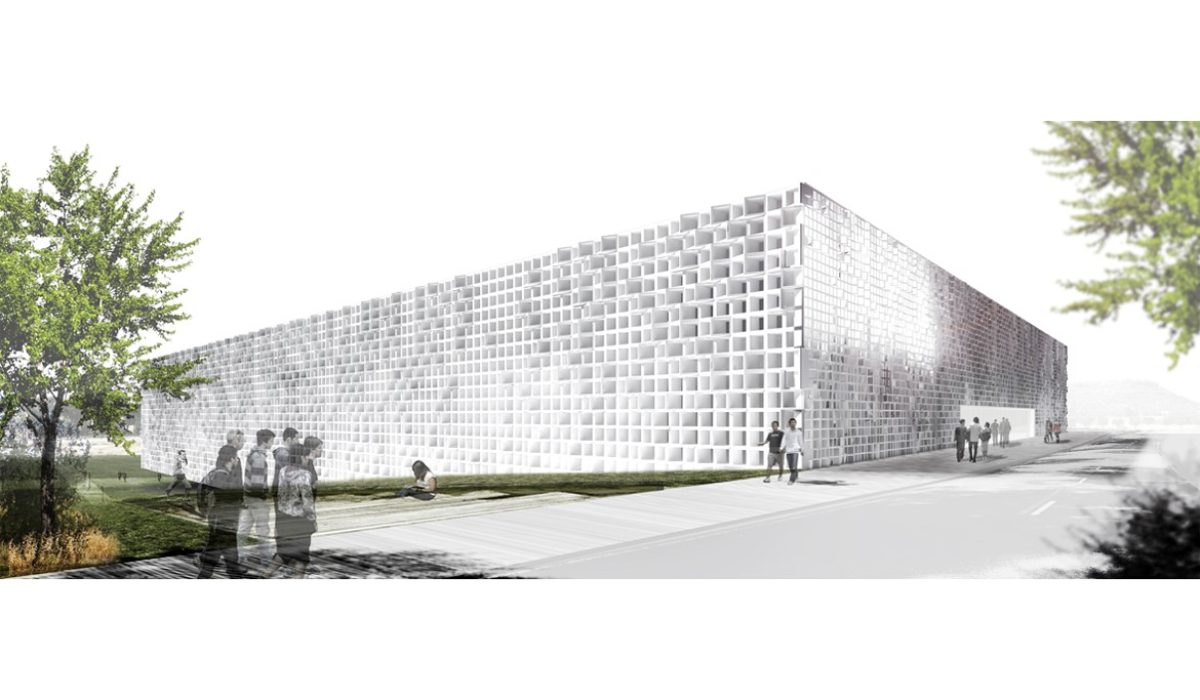SV60 Arquitectos
The architecture proposed for the new Medical school building tries to reflect the contemporary life and therefore to express the autonomy of architecture with a the maximum care over the spatial context. It’s been conceived as an architecture that connects the urban structures in the vicinity and the natural lanscape. Mass, void, landscape, light, material…The sort of perception of architecture that we are proposing bears mainly on these timeless values.
Our building aims to provide easy functionality for teaching, research and communal activities. But the aim of the building is also to cultivate other synergies and create a welcoming and aesthetically attractive architecture that will be a quiet and and unpretentious landmark on the University campus which will inspire and stimulate students, faculty, visitors and staff. A new building, harmoniously integrated into the surrounding natural and built environment, which gives great importance to the comfort of the people who is going to use it.
Our proposal works as a single building, but negotiates with the environment in two ways. On one hand, we propose a volume that holds an internal surprise, a courtyard which contains a piece of forest and is adapted to the topography. A space to increase the spacial quality and to give the users the possibility of having a part of nature inside the building. The built volume around the courtyard bears the internal uses of the building, the facade is built with local prefabricated element as a continous lattice to protect the building from solar radiation. On the other hand, the main lobby is located towards the interior of the building in a close relation to the public Belvedere creating a natural flow of people from outside to inside the building, and allowing the pedestrian street to penetrate inside the building. The new building is incorporated into the urban context considering the surrounding lanscape. We also create an external lobby or square under the building, taking into account the physical topography the buildings fly over this space generating a covered area to hold different activities (outdoor classes, exhibitions, students meetings, etc).
The internal courtyard is a part of lanscape integrated in the building providing the users a new concept of teaching centre where the green areas are part of the building to create a unique atmosphere. It allows physical and visual connectivity amongst the different areas of the building. The designed internal circulations incorporate pedestrian desire lines arround the courtyard which connect through the vertical cores the arrival of user with the buildings entrance to the lobby. The building is proposed as a programatic carpet which allows internal flexibility and growth capacity, to respond successfully to unpredictable changes in medicine, manpower, patterns of disease, science and technology, need and demand, ecological environment, etc. Flexibilty and adaptability to potential changes are main concepts used to improve the characteristics of the proposed building
The new building tries to take advantage of important sight lines and views between the Campus and its surroundings, in relation to this the north façade is slightly folded to allow the cladding system for opening up views of the Aronas Mountain and the Athalassa Forest. There are four vertical cores in the building which houses the public and private communications, and also is the main structural support of the building, using big depth truss elements to buid the main structure of the building. All elevations have horizontal and vertical shading to control a range of sun angles using a prefabricated element which size changes depending on the orientation. This cladding builds a vibrating façade giving the appearance of a continuous building that is only changed in the North façade.
A Zero-energy building is proposed. To achieve that we use the design process of the building to enable the reduction in a building’s energy consumption and also to use resources more efficiently and reduce the building’s negative impact on the environment. This Project combines time tested passive solar, or artificial conditioning, principles that work with the on-site assets. Sunlight and solar heat, prevailing breezes, and the cool of the earth below a building, provide daylighting and stable indoor temperatures with minimum mechanical mean.

